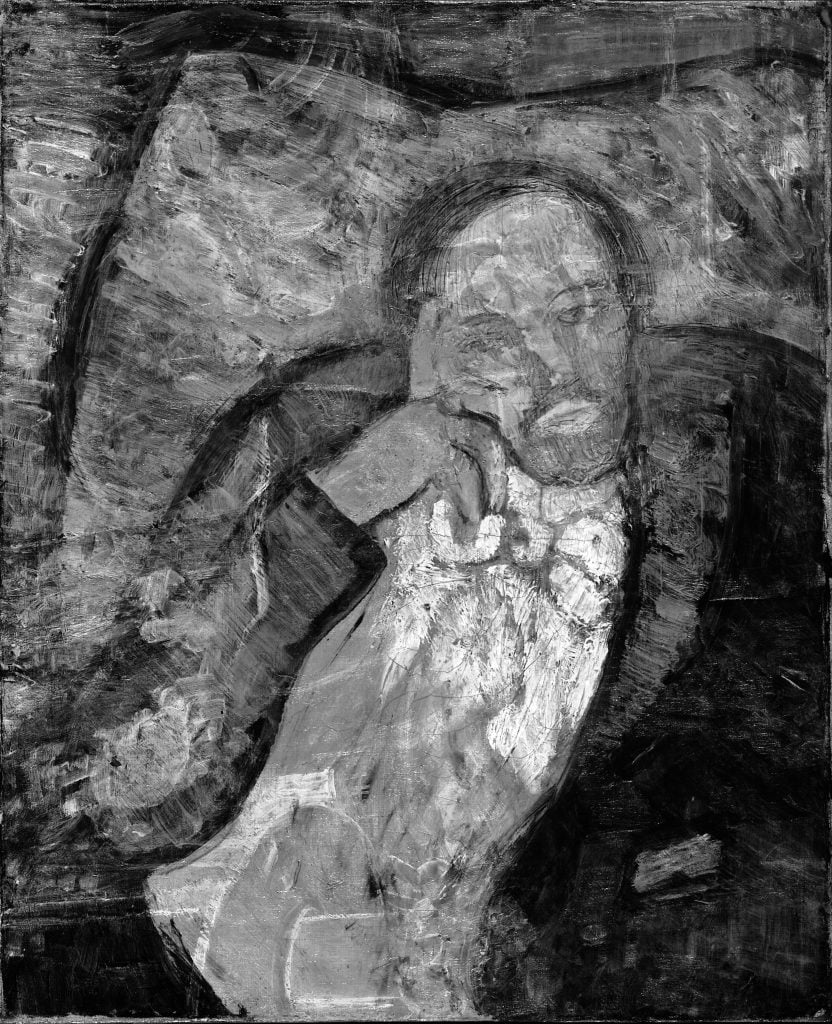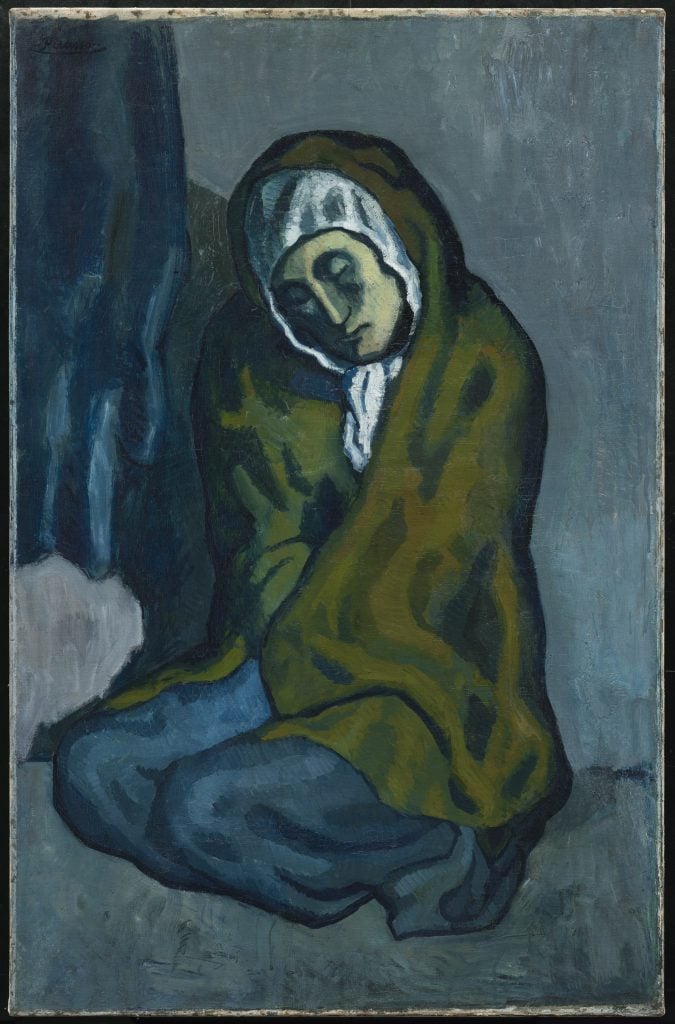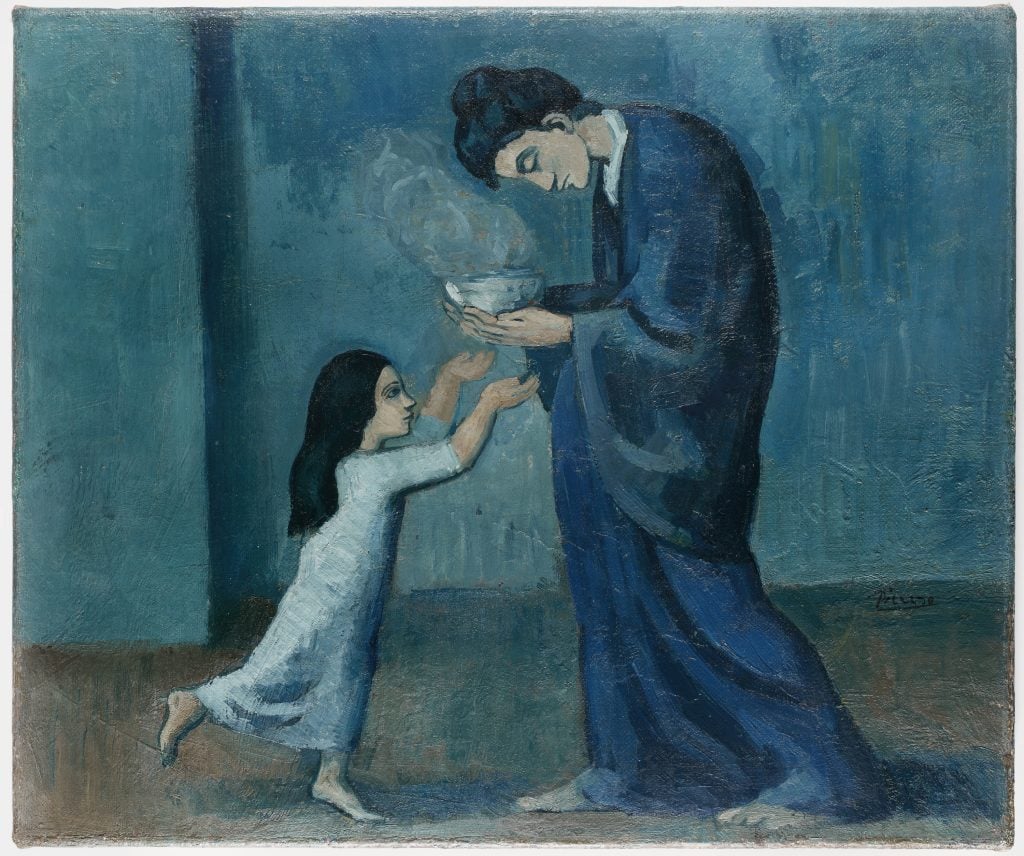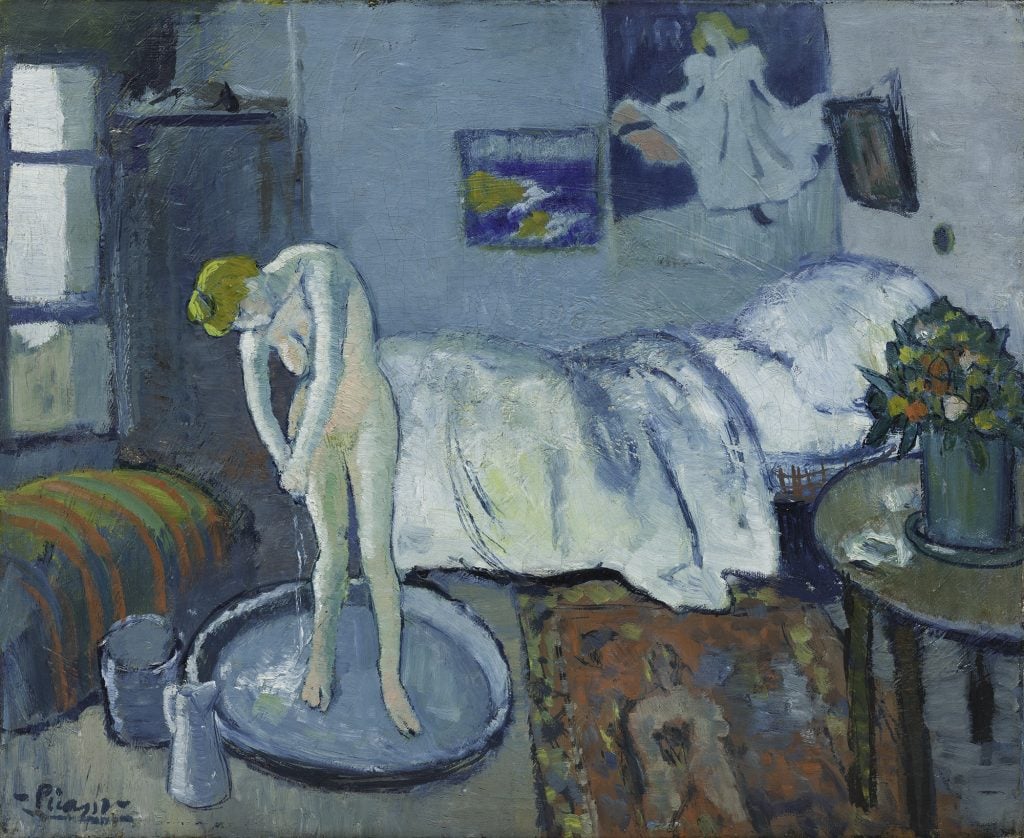As the 50th anniversary of Pablo Picasso’s death approaches in 2023, news has poured in about conservation research into three Blue Period works.
In 2014, researchers announced a “hidden” portrait beneath The Blue Room (1901) and, four years later, revealed a dozen layers beneath The Soup (1903), plus a landscape below Crouching Beggarwoman (1902).
The fruits of this research are now being shared with the public in “Picasso: Painting the Blue Period” (until June 12), an exhibition at the Phillips Collection in Washington, DC.
Since the 2018 announcement, researchers at the Phillips, which owns The Blue Room, have honed their analysis with the aid of colleagues in other institutions. National Gallery of Art imaging scientist John Delaney, for example, scanned The Blue Room four times (most recently in 2019) with increasingly refined and sensitive instruments, according to Phillips curator Susan Behrends Frank, to peel back the history of the work.
Each scan “brought forward additional information about elemental materials and clarity of detail in the portrait of the man beneath the surface image,” she said.
“We want people to see this well-known artist in a fresh light—to see him at the very beginning of his career internationally,” Behrends Frank added. “We want people to see how rich this very early moment is in his career, and the conservation science in this exhibition gives you another window into thinking about the creative process of an artist that seems to be so well known.”

An infrared reflectance image of The Blue Room showing the portrait of an unknown man. The canvas is rotated 90 degrees clockwise. Image: John Delaney and Kathryn Dooley, National Gallery of Art.
The Blue Room, which is the first of the three major Blue Period canvases that exhibition visitors encounter, was originally titled The Toilette when Duncan Phillips purchased it in 1927 as his first Picasso acquisition.
It was just the third to enter a U.S. museum after the Art Institute of Chicago acquired The Old Guitarist (1903-4) and Albright-Knox Art Gallery acquired La Toilette (1906) the prior year.
For decades, conservators knew something lay hidden beneath, because some brushstrokes went the wrong way, and underlying forms peeked through. The surface depicts a nude woman, head bowed, washing herself over a basin in a room into which light streams from a window on the left. A bureau and chest flank the window, and a colorful rug, table with flowers, and bed round out the interior.
The bather’s pose, which evokes the works of Edgar Degas and Auguste Rodin, plus Picasso’s addition of two pictures into the scene, reveal his broader artistic mission.
The artist used ultramarine blue, which was costlier than his typical Blue Period Prussian blue paint, to include an image on the bedroom wall his own Barcelona seascape next to Henri de Toulouse-Lautrec’s 1895 poster “May Milton,” as a way of associating himself with one of his idols. Researchers now believe that the underpainting of the man was done in mid-summer 1901, giving the final version of The Blue Room an early- to mid-November 1901 date, rather than the prior scholarly consensus of summer 1901.
This means Picasso painted the final work shortly after he turned 20, which is significant for an artist who told biographer Pierre Daix that his friend Carles Casagemas’s suicide at that age “got me started painting in blue.” (Casagemas worked in the same studio as Picasso and died in a cafe just down the street that February.)
Notedly, the new dating also means that Picasso memorialized Lautrec with The Blue Room, as Lautrec died in September 1901 at age 36. (Prior dating would have meant that Picasso painted the work while Lautrec was still alive.)
Picasso may have done the underpainting to curry favor with someone, or it may have been an archetype of someone he saw at Montmartre, Behrends Frank said. She added that conservators’ new understanding of how thinly and quickly Picasso painted The Blue Room supports artist Jaume Sabartés’s recollection, in his memoir of 1901, that Picasso worked seemingly with tunnel vision, focusing all his energy on creating.
“Our painting really confirms that entire manner of his concentration and process,” Behrends Frank said.
Research into two more Blue Period pictures from the Art Gallery of Ontario, Crouching Beggarwoman and The Soup, also chart new understandings of Picasso’s process.

Pablo Picasso, Crouching Beggarwoman (1902). © 2022 Estate of Pablo Picasso / Artists Rights Society (ARS), New York
In the former, Picasso first painted the woman holding bread (or a bowl) in her hand. But he later changed his mind, and enshrouded both hands in the woman’s cloak.
“By covering that up and enclosing the figure completely, so all we see is her face, it gave her a totally different presentation and meaning,” Behrends Frank said.
Scans of the work showed a landscape beneath. It is unknown if Picasso painted that work, which was also initially a mystery.
“We thought this was a fantasy [scene] inspired by [painter Pierre] Puvis de Chavannes,” Behrends Frank said.
But when she and her colleagues showed the under-image to Josep Laplana, director of the Museum of Montserrat, he said he knew what it depicted.
“Immediately, he recognized that it’s this private park now owned by the city of Barcelona,” Behrends Frank said. (There is no record of Picasso having visited the park, which would have been closed to the public in the early 20th century.)

Pablo Picasso The Soup (1903). © 2022 Estate of Pablo Picasso / Artists Rights Society (ARS), New York
In The Soup, Picasso at one time considered a male figure giving bread to a boy or a girl, until he changed it to a woman giving soup to a girl. The image was an “obsession” to Picasso, according to Behrends Frank.
“He was completely struggling with this idea of how to convey something about the universal charity that one associates with soup as a form of nourishment,” she said.
“We think of soup kitchens even today. In Picasso’s mind, he was trying to find a way to universalize this and not simply make it a genre picture, but to give it heft.”
Looking ahead, Behrends Frank thinks there is more work to be done, especially on the many Blue Period works that are in Russia, which have been x-rayed but not subjected to deeper kinds of scans.
“I’m sure those curators and conservators would love to be able to take this next step that is being done in Europe and the U.S.,” she said.









